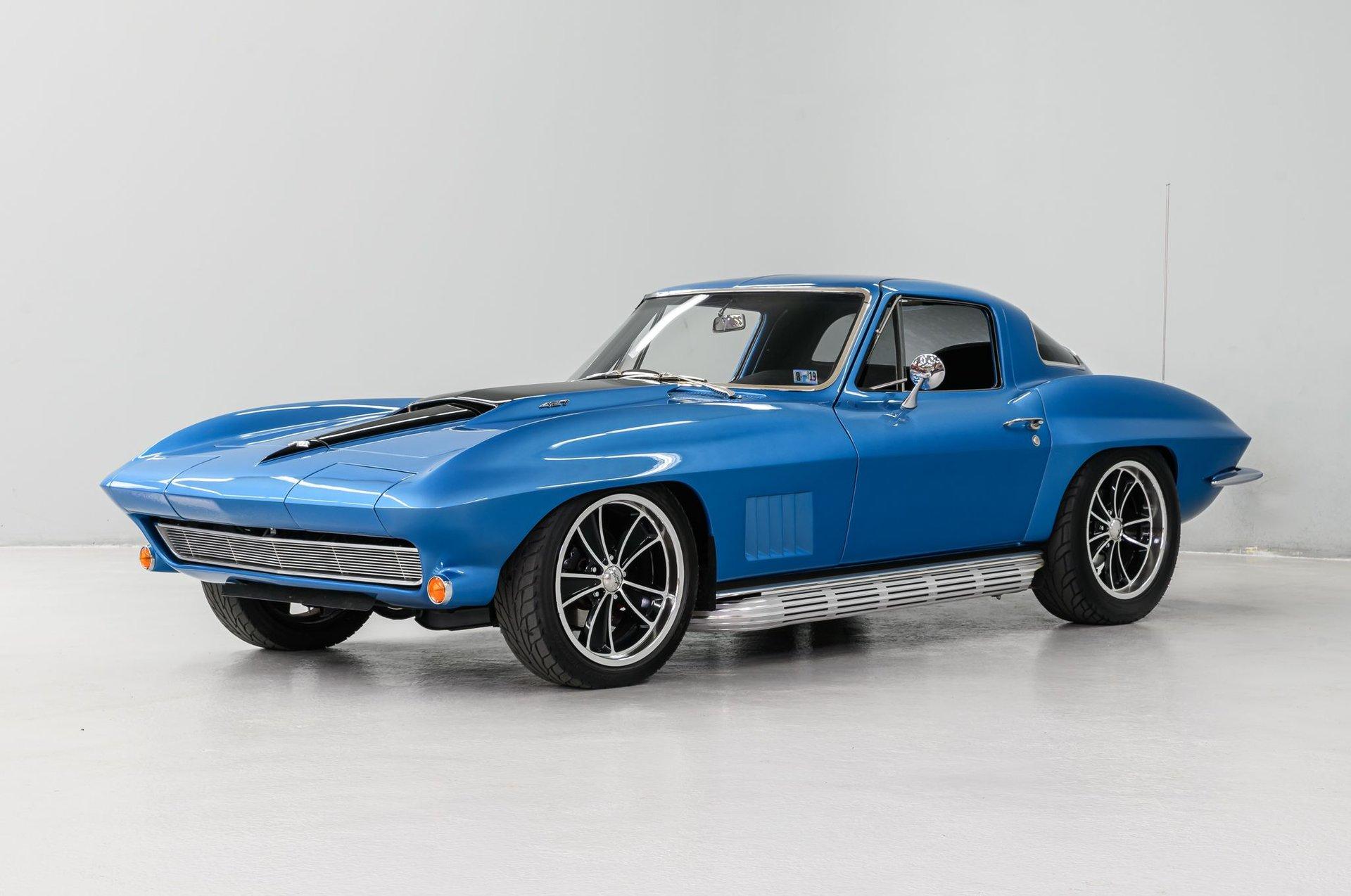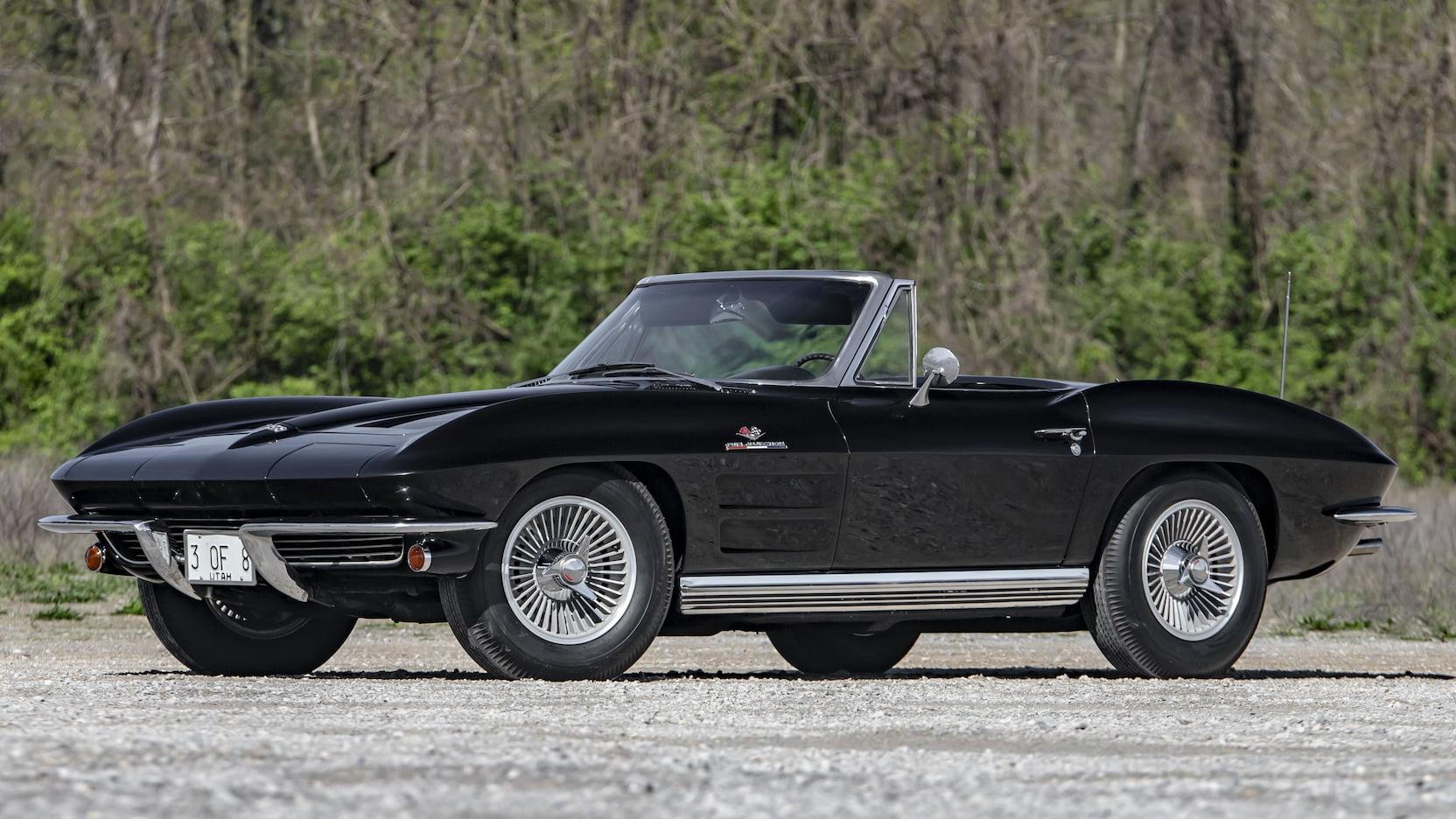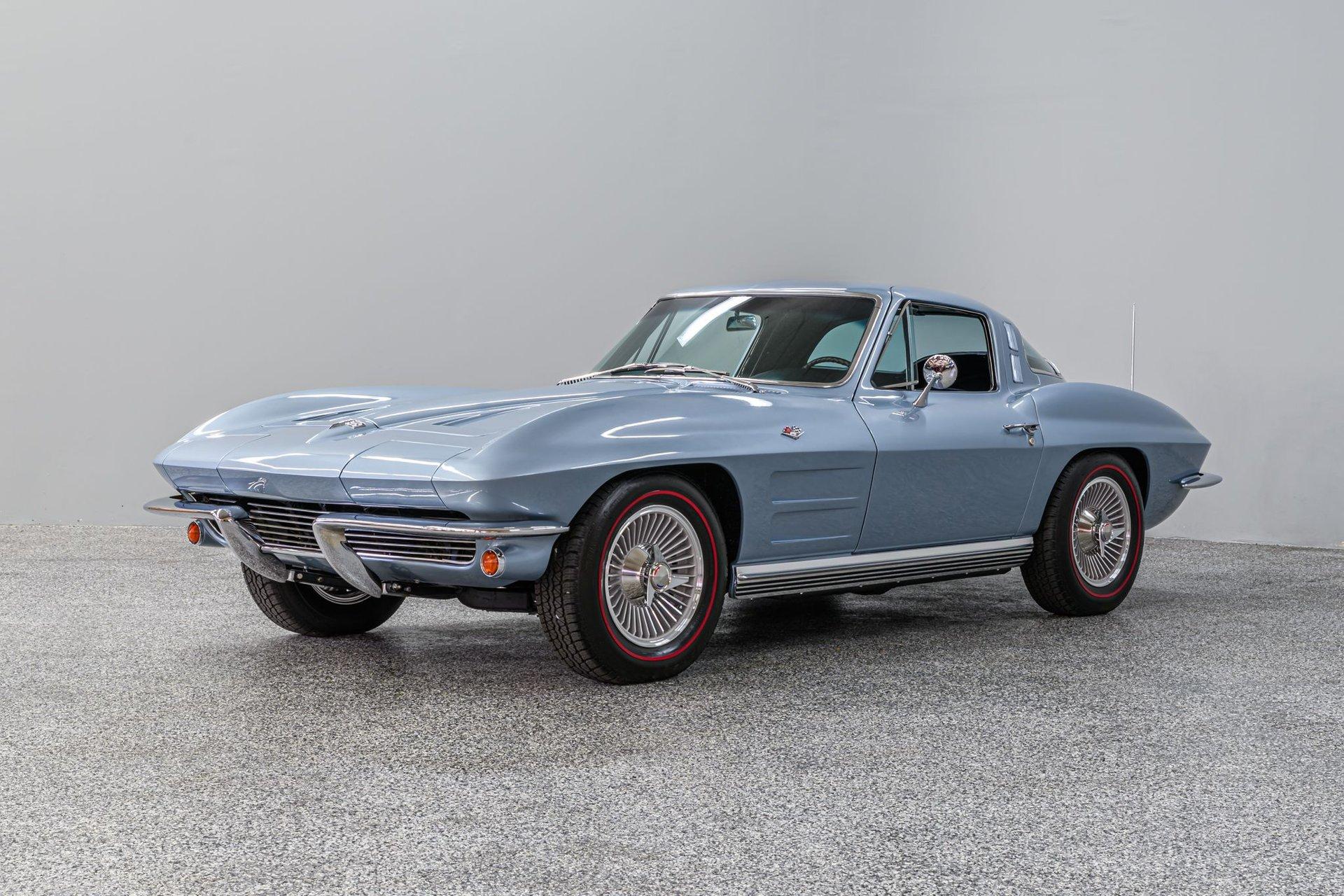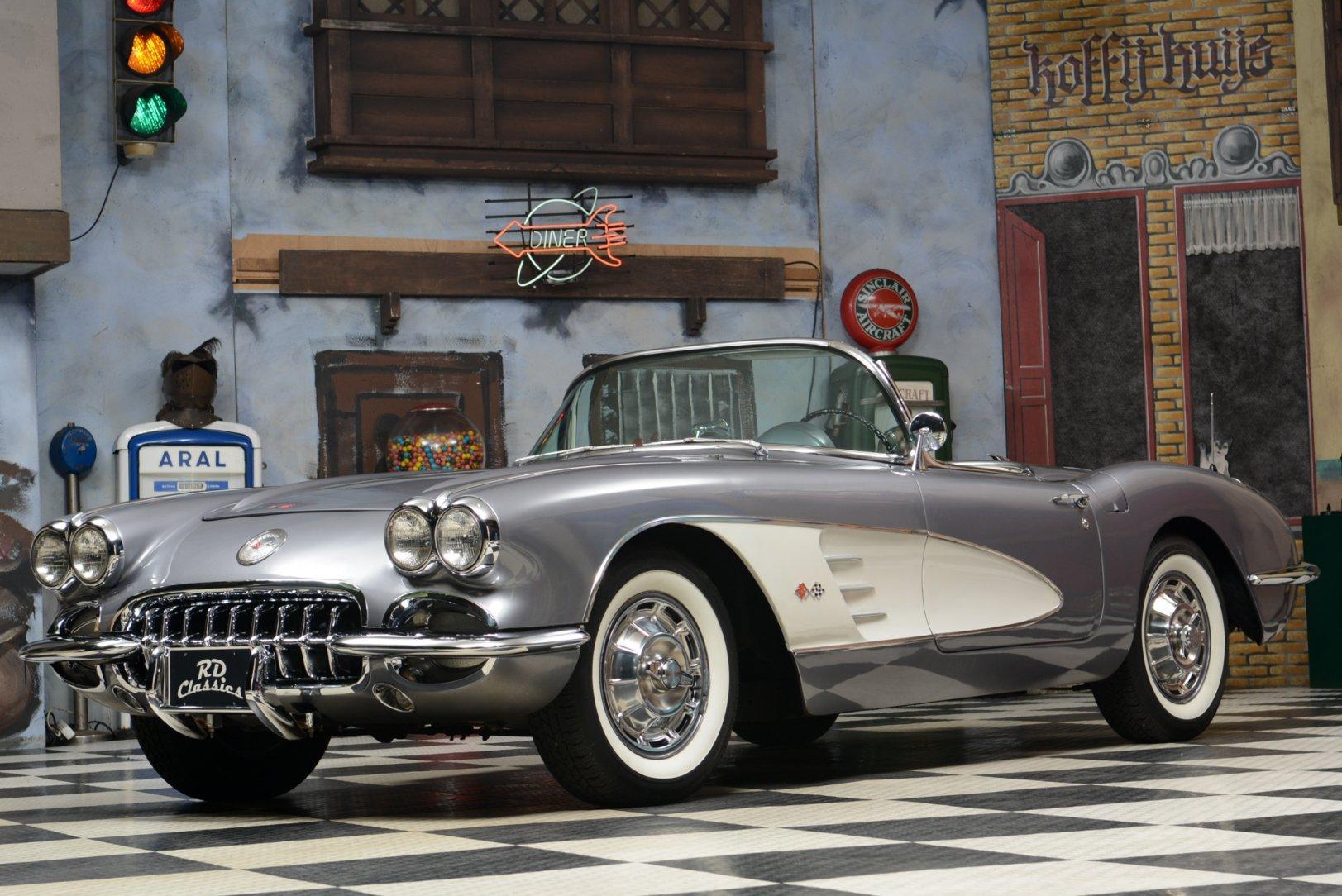1963 Chevrolet Corvette Stingray

The descriptions of the Classic Cars in the Directory were partly generated or supplemented with the help of artificial intelligence (AI). The content may occasionally not always be entirely accurate or factually correct despite careful checking.
The Chevrolet Corvette Stingray 1963 was a milestone in the American sports car industry, marking the 10th anniversary of the iconic Corvette. It was designed to take on European sports cars of the time and boasted impressive technical specifications that set it apart from its predecessors.
Under the hood, the Corvette Stingray was powered by a 327 cubic inch V8 engine, which produced 250 horsepower. However, buyers could choose from four engine options ranging from 250 to 360 horsepower, each with its own set of performance features such as four-barrel carburetors and high lift camshafts. The car had a top speed of around 130 miles per hour and was capable of going from 0 to 60 miles per hour in around 5.5 seconds.
The Stingray's sleek and aerodynamic body was designed by GM designer Bill Mitchell, who was inspired by the Mako Shark II concept car. The use of fiberglass material for the body was adopted to reduce the car's overall weight, and a new independent rear suspension system was installed to improve handling and ride comfort. The car's distinctive split rear window not only contributed to the body's unique design but also improved rear visibility.
One of the most notable technical advancements in the 1963 Corvette Stingray was the introduction of the hidden headlight system. The headlights were hidden behind electrically operated doors, giving the car a clean and smooth front-end design. The instrument cluster was also updated with a new set of gauges, including a speedometer, tachometer, and fuel level indicator, providing the driver with all the necessary information at a glance.
Other technical features of the Corvette Stingray included four-wheel disc brakes, larger wheel and tire combinations, and an optional four-speed manual transmission. The car's handling was enhanced with a wider track and improved suspension, making it easier to control at high speeds.
Overall, the Chevrolet Corvette Stingray 1963 was a technologically advanced sports car that introduced several groundbreaking features to the American market. Its sleek design, powerful engine, and advanced technical specifications continue to make it a highly desirable car among collectors and enthusiasts.
Milestones
- Introduced as a 1963 model at the New York Auto Show in April 1962 - First generation of Corvette Stingray - First time a Corvette was available as a coupe with a split rear-window design - All-new chassis featuring independent rear suspension - Offered a new 327 cubic inch V8 engine with electronic fuel injection as an option, producing up to 360 horsepower - Offered a four-speed manual transmission or a Powerglide automatic transmission - Optional side-mounted exhaust system with distinctive chrome covers - Available in five body paint colors, including Riverside Red and Daytona Blue - Featured a bold new design with a sharply creased body, hidden headlights, and a tapered rear end - Won the Grand Touring category in the 1963 24 Hours of Le Mans race with the Corvette Stingray Z06 race car.Technical
- The Chevrolet Corvette Stingray was first introduced in 1963 as a 2-door convertible or coupe sports car. - The car had a fiberglass body and a steel structure for added strength. - It was powered by a 327 cubic inch, V8 engine that produced 250 horsepower and 350 lb-ft of torque. - The engine was mated to a 3-speed manual transmission, with a 4-speed manual or 2-speed automatic transmission available as options. - The car featured four-wheel independent suspension, with coil springs and shocks at all four corners. - It also had power-assisted disc brakes for improved stopping power. - The Corvette Stingray had a top speed of around 130 miles per hour and could accelerate from 0 to 60 mph in just 7.1 seconds. - The car was available in a range of colors, including red, blue, white, silver, and black. - It had a long, sleek design with sharp angles and a distinctive split rear window. - The interior featured bucket seats, a wood-grain steering wheel, and a dashboard with a tachometer, speedometer, and gauges for oil pressure, water temperature, and fuel level.



